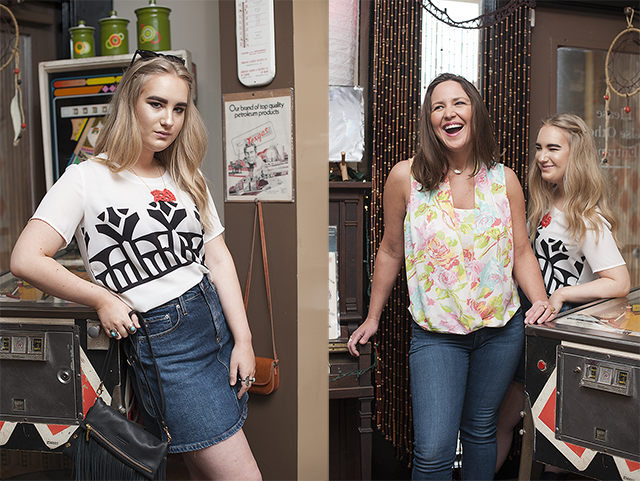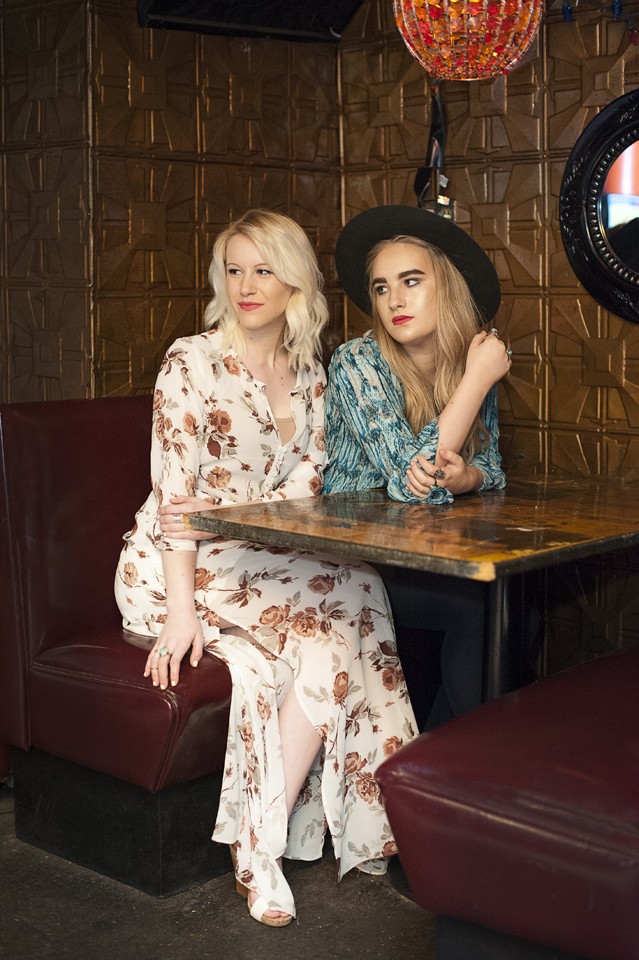
I’m so thankful to have worked on the cover feature story and fashion spread this week. To follow the spirit of many of the style sessions I’ve posted here, the spring fashion spread shows fashion through the portrait of a person and their true style. Twenty-something Memphian Leah-Claire Friddle Grawemeyer portrays herself in familiar and favorite places in Memphis, the places she grew up in. Here, we learn more about Leah with additional images to supplement the original spread.
[jump]
Leah and her family are no strangers to the world of fashion. In 2011, her family opened a few boutiques on South Main – Everleahs and Sir Samuels next to their restaurant Grawemeyers, which has now become South Main Sushi. The two boutiques have since transformed as well into a vintage store called Broken Arrow run by Leah’s sister Olivia Friddle. Growing up in the boutique business along with traveling to fashion meccas such as Paris, Milan, and Rome has broadened Leah’s style.
“I’ve seen so many different styles. I always remember them and their influences. Anyone from Brigitte Bardot to Cara Delevigne to Elizabeth Taylor are my influences. I always find something about each style that I like. Whether it’s a scarf or even their lipstick. Body language and confidence is all about style too. The way you present yourself is major. ‘Perception is reality,’” she says.
As far as her personal style favorites for spring, Leah talks tassels, leather, and looking naturally beautiful.
“One of my favorite things I’ve been seeing is wrap-around sandals with tassels. I always love a good western influence too. Modesty is back in. Mid length skirts with booties, half turtleneck shirts, and long sleeve chiffon tops. You don’t have to show a lot of skin to be sexy, but exposing your wrist and ankles are always good. Good leather bags are always a good staple and investment piece. Look for local leather makers and spend a little extra for one. I love lots and lots of rings. Put one on every finger and own it. Natural hair and makeup is always beautiful. Especially when you add a simple red lip. For spring, let your eyebrows go wild and bold. It’s a defining feature of your face and dark eyebrows are always slimming.”
Leah is an artist, musician, and student now working with the Lansky family in their various clothing store locations. With her love for music and recent focus on the banjo, Leah also volunteers her time at the Blues Foundation and Blues Hall of Fame.
“South Main is my community. My sense of belonging is here. Everyone knows everyone and that’s a great feeling,” Leah says.









Check out the issue on stands now and see the full outfit list with links below to the local shops and designers used in the feature.
Cover Photo at City & State
Shirt and Jeans – Lansky 126
Scarf – Local Designer Garner Blue, Stock & Belle
Rainy day with umbrella
Dress – Broken Arrow
Clutch – Lansky 126
Bracelet – Lesouque
Umbrella – American Apparel
Grand piano at South Main Sushi
Floral Dress – Stock & Belle
Cardigan – Lansky 126
Shoes (black pumps) – Lansky 126
Belt (Leather Tassel) – Lansky 126
Rings – Broken Arrow
At Broken Arrow
Graphic Top – Stock & Belle
Necklace – Local artist Nikkila Carroll, Stock & Belle
Jean skirt – Lansky 126
Bag – Lansky 126
On Stephanie
Shirt – Lansky 126
Jeans – Lansky 126
Under bridge at new mural in South Main
Shirt – local designer Tara Skelley of Dilettante Collection
Jeans – Lansky 126
Shoes (Brown strappy wedges) – Lansky 126
Purse – Broken Arrow
Blues Foundation Stairs
Top with Kimono Wrap – Stock & Belle
Shoes – Lansky 126
Scarf – Broken Arrow
Banjo – Model’s own
Blues Foundation Wall
Dress – 20twelve
Necklace – Lesouque
Shoes – Lansky 126
Kimono Top – Free People
Ernestine & Hazel’s upstairs
Top and Skirt – Stock & Belle
Necklaces – local designer Lauren Carlson of Question the Answer
Playing Pool at Ernestine & Hazel’s
Dress – Lansky 126
Hat – Model’s own
On Olivia
Dress – Stock & Belle
Bike and Flowers
Top – Broken Arrow
Skirt – Broken Arrow
Shoes – Lansky 126
Sunglasses – Lansky 126
Bag – Madewell
Bike – Midtown Bike
South Main intersection with trolley
Top (white fringe) – Lanky 126
Jeans – Lansky 126
Shoes (brown leather pumps) – Broken Arrow
Necklace – Lansky 126
Bag – City & State